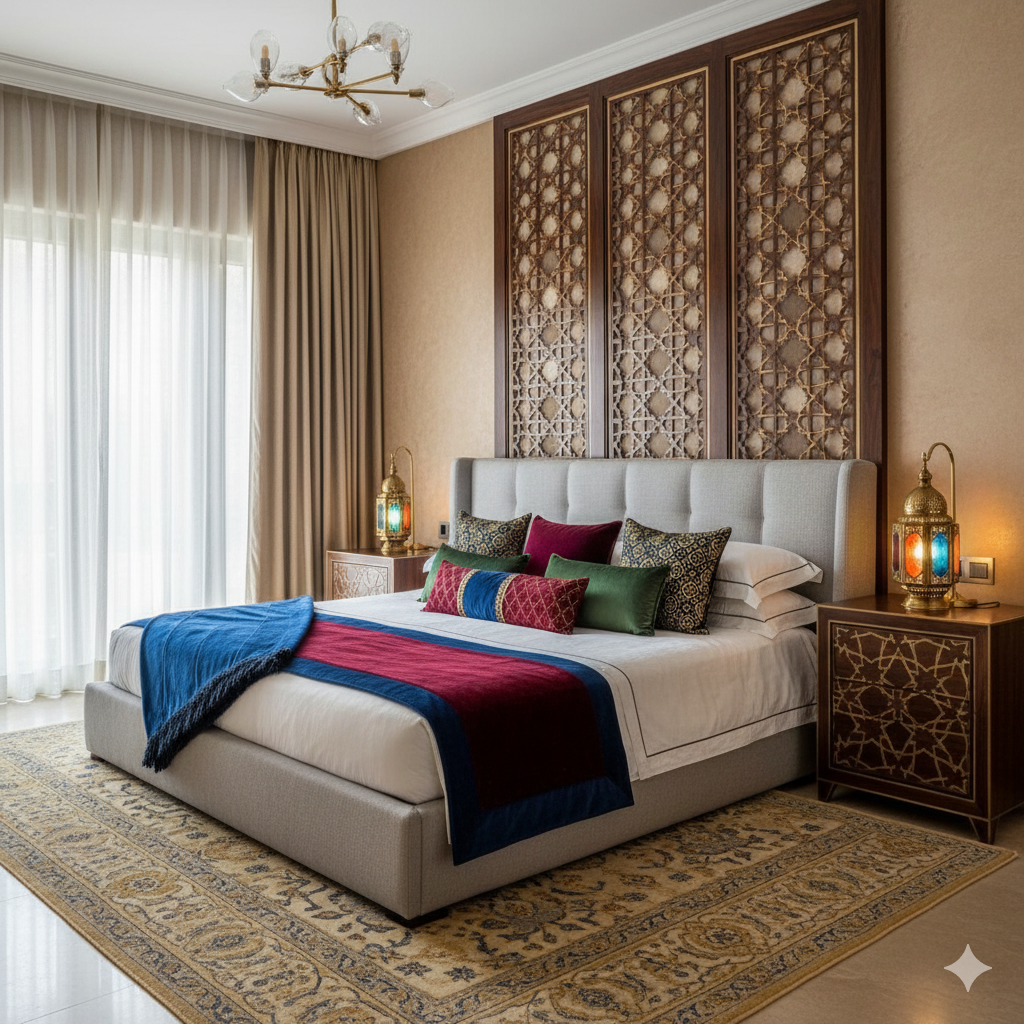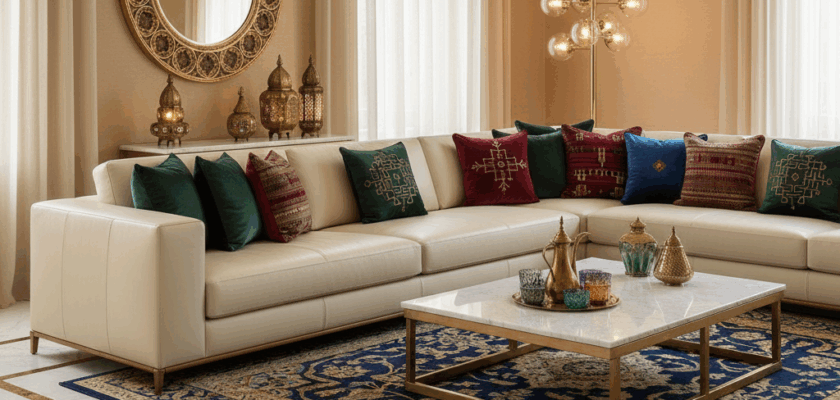The fusion of Italian craftsmanship and Arabian design sensibilities creates interiors that are both sophisticated and culturally rich. As Dubai continues to establish itself as a global design capital, homeowners are increasingly seeking ways to blend the clean lines of European minimalism with the warmth and opulence characteristic of Middle Eastern aesthetics. Solomia Home, recognized as the top modern interior design company in Dubai and official dealer of luxury Italian furniture brands, has pioneered this design approach across countless residences, proving that these two distinct styles can coexist in perfect harmony.
This comprehensive guide explores the art of balancing Italian elegance with Arabian luxury, offering practical strategies, real-world examples, and expert insights to help you achieve a timeless, culturally resonant interior.
Understanding the Two Design Philosophies

Italian Design: The Essence of Minimalism
Italian furniture design has long been synonymous with understated elegance. Characterized by clean geometric lines, superior craftsmanship, and a “less is more” philosophy, Italian pieces emphasize quality over quantity. Brands like Minotti, B&B Italia, and Flexform have built their reputations on creating furniture that serves as functional art—each piece meticulously engineered and aesthetically refined.
The Italian approach prioritizes:
- Neutral color palettes dominated by whites, grays, and earth tones
- Premium materials such as fine leather, marble, and polished woods
- Streamlined silhouettes without unnecessary ornamentation
- Emphasis on negative space and architectural clarity
Arabian Design: Warmth Meets Grandeur
Contemporary Arabian interiors draw from centuries of cultural heritage while embracing modern sensibilities. Unlike traditional maximalist Arabian design with heavy patterns and abundant decoration, today’s Arabian aesthetic retains warmth and luxury while adopting cleaner lines and more intentional styling.
Key characteristics include:
- Rich, jewel-toned color accents in emerald, sapphire, and ruby
- Layered textiles and plush fabrics
- Metallic finishes, particularly gold, brass, and bronze
- Geometric patterns inspired by Islamic art
- Generous proportions that convey hospitality and abundance
The Art of Balance: Core Principles
Start with a Neutral Foundation

The most successful Italian-Arabian interiors begin with a neutral base that allows both styles to shine without competing. Use Italian furniture pieces in neutral tones—cream leather sofas, gray marble coffee tables, or white lacquered storage units—as your foundational elements. This neutral canvas provides the perfect backdrop for introducing Arabian warmth through accessories, textiles, and accent pieces.
Layer Textures Strategically
While Italian design tends toward smooth, refined surfaces, Arabian interiors embrace tactile richness. The key is layering these textures without creating visual chaos. Pair a sleek Italian leather sectional with silk velvet cushions in deep jewel tones, or place a plush Persian-inspired rug beneath a minimalist Italian dining table. This contrast creates depth while maintaining sophistication.
Respect Proportions and Scale
Italian furniture often features low profiles and horizontal emphasis, while Arabian design favors generous proportions. When combining these elements, pay attention to scale relationships. A low-slung Italian sofa can be beautifully complemented by tall Arabian-style floor lamps or an oversized decorative mirror with an ornate frame, creating vertical interest without overwhelming the space.
Material Marriage: Combining Italian and Arabian Elements
Marble and Metallic Accents
Italian Carrara marble pairs exceptionally well with Arabian brass and gold accents. Consider an Italian marble console table adorned with brass decorative objects, or marble flooring with brass inlay patterns. This combination speaks to the luxury inherent in both design traditions while creating a cohesive visual language.
Wood Tones and Warmth
Italian walnut or oak furniture provides an excellent foundation for introducing Arabian warmth. The natural grain of Italian wood pieces creates organic texture that complements rather than conflicts with Arabian textiles and patterns. Dark wood Italian dining chairs can be softened with upholstered cushions in Arabian-inspired fabrics.
Glass and Light
Italian design’s love of transparency and light transmission through glass elements works beautifully with Arabian design’s emphasis on creating ambient, layered lighting. Venetian glass chandeliers or Italian glass-topped tables can be paired with Arabian brass lanterns or colored glass votives to create a luminous, multi-dimensional lighting scheme.
Color Strategy: Creating Cohesion
The 70-20-10 Rule
Apply the classic color rule with an Italian-Arabian twist: 70% neutral base colors (whites, beiges, grays) from Italian furniture, 20% secondary colors introducing Arabian warmth (deep blues, rich browns), and 10% accent colors in jewel tones or metallics that provide Arabian punch.

Transitional Tones
Use transitional colors that bridge both aesthetics. Taupe, warm gray, champagne, and soft gold work equally well in Italian minimalism and Arabian luxury, creating seamless transitions between different design elements in your space.
Case Study: Palm Jumeirah Villa
A 6,000-square-foot villa on the Palm Jumeirah exemplifies this design marriage. The main living area features a Minotti sectional in pearl gray leather as the anchor piece, surrounded by custom-designed side tables with marble tops and brass geometric bases. The neutral Italian furniture allows the room’s statement piece—a hand-knotted silk rug in deep blue and gold—to command attention without overwhelming the space.
Floor-to-ceiling windows frame Dubai Marina views, while sheer Arabian-style curtains in ivory silk soften the abundant natural light. The Italian Foscarini lighting fixtures provide sculptural interest, while brass Arabian lanterns on the dining table create intimate ambiance during evening gatherings.
The result is a space that feels both spacious and inviting, sophisticated yet warm—distinctly international while honoring local design sensibilities.
Case Study: Emirates Hills Contemporary Residence
This Emirates Hills property demonstrates how Italian furniture can anchor an open-plan layout while Arabian elements define individual zones. The open living and dining area uses Italian furniture to create visual continuity: a Poliform wall system in matte lacquer, Cassina dining chairs, and a minimalist Italian sofa collection.
Arabian character emerges through carefully curated additions: a collection of antique brass coffee pots displayed in the Italian shelving system, throw pillows in traditional Sadu weaving patterns on the contemporary sofa, and a custom-designed chandelier that reinterprets Arabian geometric patterns in a modern, linear form.
The master bedroom continues this dialogue with an Italian upholstered bed platform in soft gray flanked by Arabian-inspired nightstands featuring intricate inlay work. The material palette remains cohesive—marble, brass, dark wood, and luxurious fabrics—allowing diverse style elements to feel like parts of a unified vision.
Practical Application: Room by Room
Living Room
Begin with a statement Italian sofa in a neutral tone. Add depth with a richly patterned rug that introduces Arabian colors and motifs. Use Italian marble or glass coffee tables to maintain visual lightness, then layer in Arabian elements through cushions, throws, and decorative objects in brass or copper.
Dining Room
An Italian dining table with clean lines becomes the perfect foundation for Arabian hospitality. Choose sculptural Italian dining chairs and dress them with cushions in Arabian fabrics. Overhead, consider a dramatic lighting fixture that bridges both styles—perhaps a modern chandelier with subtle Arabian geometric influences.
Bedroom
Italian bed frames with upholstered headboards in neutral fabrics create a serene foundation. Introduce Arabian warmth through bedding in jewel tones, decorative pillows with traditional patterns, and bedside lamps with brass details. Keep the walls and larger furniture pieces neutral to maintain a restful atmosphere.
Home Office
This space particularly benefits from Italian organizational systems and sleek desks paired with Arabian textile elements for warmth. An Italian desk in walnut or lacquer provides a professional foundation, while an Arabian-style rug defines the space and decorative brass accessories add personality without distraction.
Common Mistakes to Avoid
Overcrowding with Ornamentation
The biggest pitfall is abandoning the minimalist principles that make Italian design so effective. Even when adding Arabian elements, maintain breathing room. Each decorative piece should be intentional and meaningful rather than filling every surface.
Clashing Metallics
While mixing metals can work beautifully, doing so requires intention. If your Italian furniture features chrome or stainless steel accents, ensure your Arabian brass elements are substantial enough to coexist rather than compete. Generally, commit to either warm metals (brass, gold, copper) or cool metals (chrome, silver) as your primary metallic tone.
Ignoring Light Quality
Dubai’s intense natural light requires different considerations than the soft European light Italian furniture was designed for. Use Arabian textile traditions—sheer curtains, mashrabiya-inspired screens—to filter and soften light while protecting Italian furniture fabrics from sun damage.
Sustainability and Longevity
Both Italian craftsmanship and Arabian design traditions emphasize quality and longevity over trends. When investing in this design approach, choose Italian furniture pieces with timeless silhouettes that will remain relevant for decades. Similarly, select Arabian elements—whether antique or contemporary—that reflect authentic craftsmanship rather than mass-produced imitations.
This commitment to quality ensures your interior will age gracefully, developing character and patina while maintaining its essential beauty and functionality.
Conclusion: Creating Your Personal Sanctuary
Successfully mixing Italian furniture with contemporary Arabian interiors requires understanding the core principles of both design philosophies and finding the balance that reflects your personal aesthetic. The goal is not to create a museum of styles but a living space that feels both sophisticated and welcoming, international and locally grounded.
Start with quality Italian pieces that provide structural elegance, then layer in Arabian elements that bring warmth, color, and cultural resonance. Pay attention to proportion, scale, and color relationships. Most importantly, trust your instincts—the most successful interiors reflect the personalities and lifestyles of those who inhabit them.
Whether you’re furnishing a villa in Palm Jumeirah, an apartment in Dubai Marina, or a home in Emirates Hills, this fusion approach offers endless possibilities for creating spaces that are uniquely yours—refined yet comfortable, minimalist yet warm, contemporary yet timeless.
